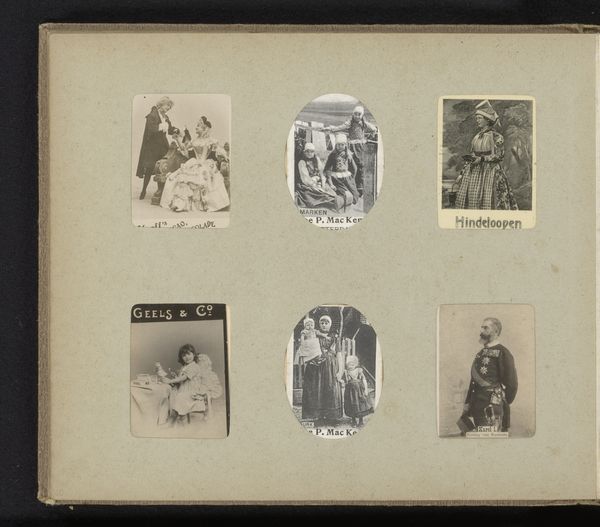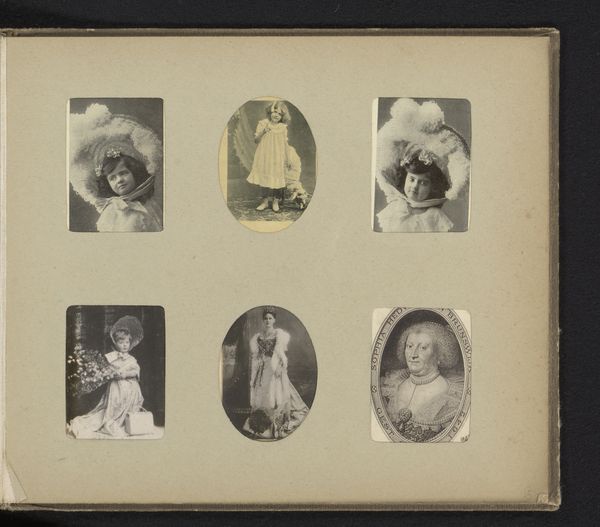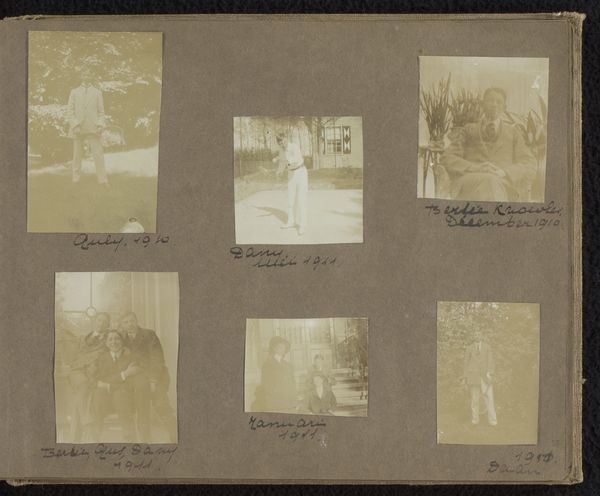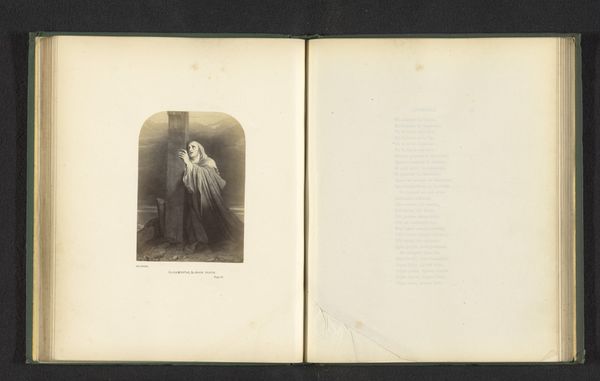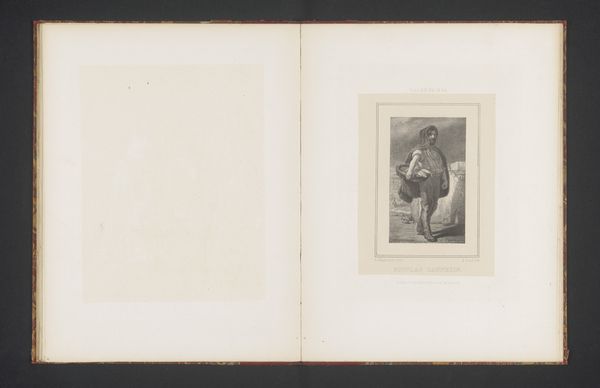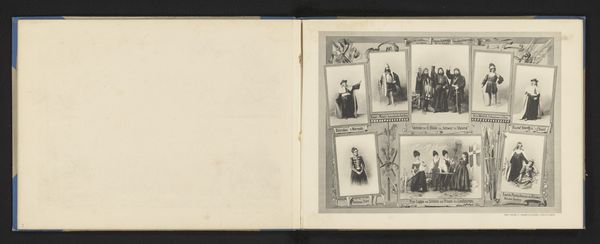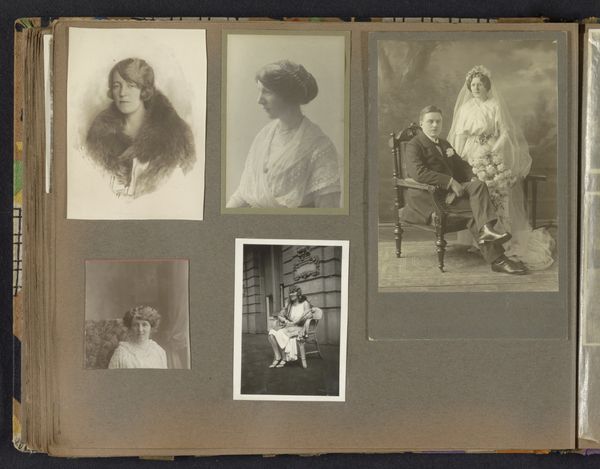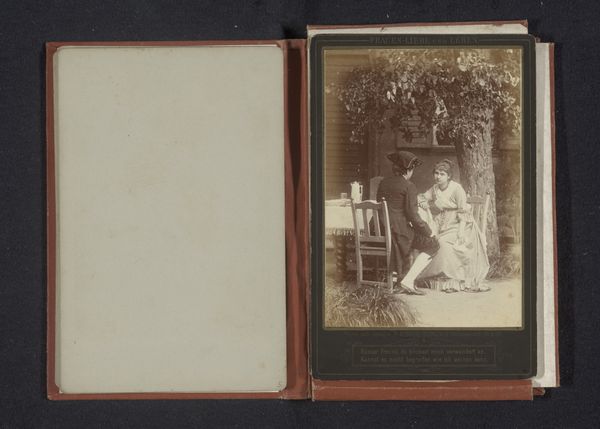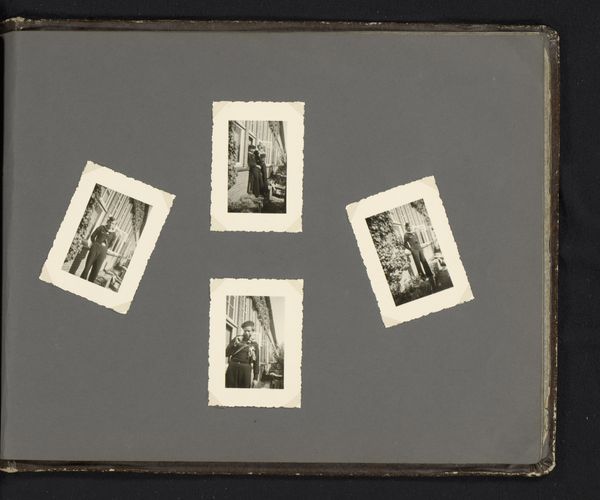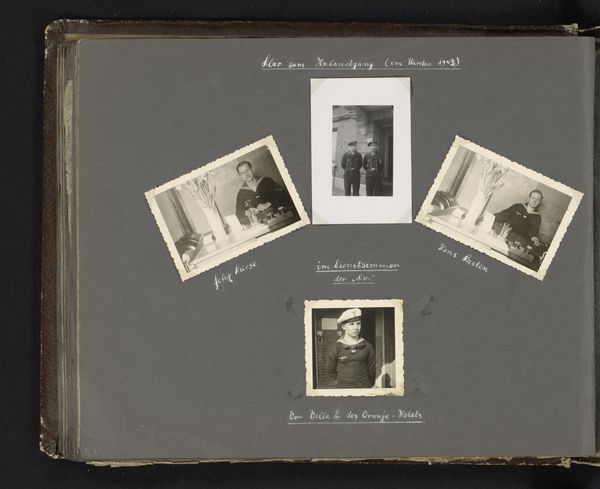
photography, albumen-print
#
pictorialism
#
photography
#
genre-painting
#
albumen-print
Dimensions: height 165 mm, width 193 mm
Copyright: Rijks Museum: Open Domain
Editor: This is "Portretten," a series of photographs created sometime between 1890 and 1900. They are albumen prints and give a glimpse into genre-painting style through photography. It's fascinating to see all these little lives captured in a single frame. How do you interpret this arrangement of portraits? Curator: I see these portraits as more than just simple representations of individuals. Consider the social context of the late 19th century. Photography, though increasingly accessible, still carried a certain weight, especially in portraiture. Who was afforded the opportunity to be captured and remembered in this way? What narratives are constructed through these curated images, and whose stories are perhaps absent? Do the photographers’ choice of albumen print versus other processes factor into how sitters were visually presented and subsequently received? Editor: That's a great point about who is included and excluded. I was focusing on the aesthetic, but I should consider what these images are saying about societal values. It looks like at least some children of merchants were likely portrayed in these images. Curator: Precisely. It is important to examine visual compositions through social context. The deliberate arrangement and constructed nature of these photographs challenges our assumptions about representation. Who held power in dictating these visual narratives? These might include questions of gender too: How were females or families positioned? Can this positioning be further intersected by class? Considering these issues, how does it change your reading of the work? Editor: Thinking about it that way, it becomes much more than just a collection of portraits. It’s a curated representation of a specific segment of society. I think that shifts my perception from one of simple observation to a more critical analysis. Thanks. Curator: Absolutely. And remember, art history isn't just about what we see, but about questioning why we see it that way. It is about deconstructing the complex power structures embedded in visual culture and opening pathways for more inclusive narratives.
Comments
No comments
Be the first to comment and join the conversation on the ultimate creative platform.
